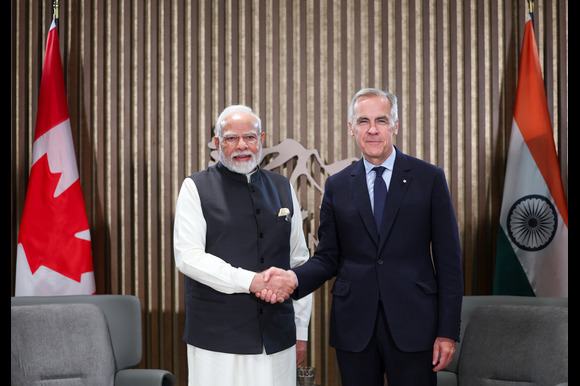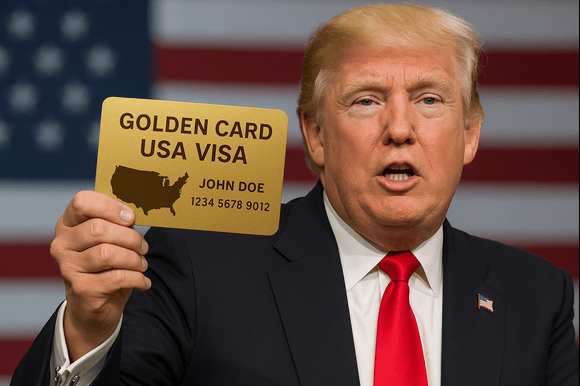
By Prime Minister's Office (GODL-India)
A standout feature of the recently signed India-UK free trade agreement is the Narendra Modi government’s landmark decision to grant UK businesses access to India’s vast government procurement market — a space long shielded from foreign competition.
This market encompasses a wide array of government purchases, ranging from goods and services to public works contracts such as road construction. Under the new agreement, around 40,000 high-value tenders worth £38 billion from federal ministries will be accessible to UK firms, particularly in strategic sectors like transportation, green energy, and infrastructure.
Trade experts say this level of access is unprecedented.
Ajay Srivastava of the Global Trade Research Initiative (GTRI), a Delhi-based think tank, stated the offer is “far greater” than what India extended in its earlier deal with the United Arab Emirates and “sets a new benchmark” for India’s trade agreements.
UK businesses bidding for Indian government contracts in specified sectors will now receive treatment almost equivalent to that of Indian suppliers. They will also gain real-time access to information about upcoming public tenders and procurement opportunities.
Moreover, under the deal, goods from the UK with as little as 20% domestic content can now be supplied to the Indian government. This provision offers UK firms significant sourcing flexibility, allowing them to procure up to 80% of parts or raw materials from other countries and still be eligible for procurement preference in India.
Another critical shift is the drastic reduction in the minimum contract value required for UK firms to bid, opening the door to a wider range of previously inaccessible lower-value projects. These include rural roads, solar panels for schools, and IT infrastructure for government departments, Srivastava noted.
However, despite the significant opportunity, British firms may find that entering and succeeding in India’s procurement landscape is not without its challenges.
UK suppliers will be eligible as Class-II local suppliers, but Indian companies will still enjoy preferential treatment as Class-I suppliers, says Dr. Arpita Mukherjee, a trade expert at the Indian Council for Research on International Economic Relations. Pricing is another key hurdle. “UK companies generally have higher costs compared to their Indian counterparts, which may pose a serious competitive disadvantage,” she added.
A more critical deterrent is India’s persistent issues with delayed payments and weak contract enforcement. According to Srijan Shukla of the Observer Research Foundation, these have long plagued India’s public procurement system. He cited a study of procurement by India’s central public sector enterprises between 2017 and 2020, which revealed that pending payments to suppliers often exceeded the average annual procurement value.
“This will be a significant barrier for UK companies looking to participate in long-term public contracts, especially those vulnerable to regulatory or political uncertainty,” Shukla told the BBC. These payment delays have similarly affected Indian small businesses, leading to liquidity crises and often forcing smaller players to exit the procurement space in favor of larger firms, he added.
These systemic challenges are reflected in India’s low ranking of 163 out of 190 in the World Bank’s 2020 Doing Business report for contract enforcement.
Although recent improvements — such as unified procurement platforms like Government e-Marketplace, the Central Public Procurement Portal, and an online dispute resolution system — have enhanced transparency, the issue of timely payments remains unresolved, Shukla said.
Mukherjee pointed out that while the India-UK agreement highlights transparency, it leaves out critical issues such as pending payments, enforcement mechanisms, and penalties for contract violations. She also noted that the Comprehensive Economic and Trade Agreement (CETA) between the two countries will not include dispute settlement provisions for the first four years after it takes effect, delaying the implementation of structured resolution mechanisms.
“Doing business in India is an acquired skill,” Shukla noted. “UK companies will need time to master the nuances of securing public tenders and maneuvering through India’s complex regulatory framework.”
Despite these ongoing challenges, India’s decision to open up its public procurement market to foreign players signals a significant policy shift. It reflects the government’s willingness to break from the past, where the sector was predominantly reserved for local small and medium enterprises, and hints at potential concessions in future trade agreements — such as the one under negotiation with the United States, according to the GTRI.
Shukla said that India, having historically kept procurement clauses out of trade deals, is now playing catch-up. But the shift also demonstrates a growing confidence in Indian firms’ ability to compete globally — both at home and abroad.
Ultimately, the expectation is that an influx of international players will not only bring competition but also compel Indian government agencies to improve procurement practices. This could help align India’s tendering and contract enforcement processes with international standards, ensuring more accountability and better outcomes in public sector projects.




